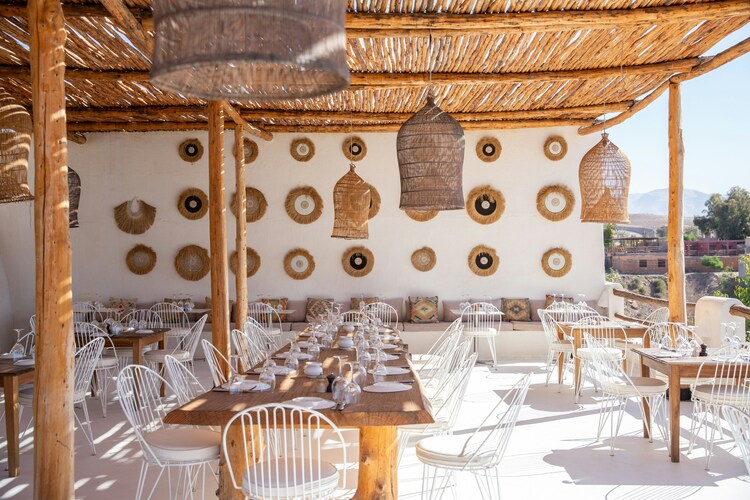The allure of Mediterranean design lies in its ability to transport diners from the bustling streets of Singapore to the sun-drenched coastlines of the Greek islands or the rustic charm of Tuscan hillsides. This timeless aesthetic, rooted in warmth, natural beauty, and relaxed sophistication, has become increasingly popular among restaurant owners seeking to create memorable dining experiences. For Singapore’s competitive F&B landscape, Mediterranean-inspired interiors offer a unique opportunity to differentiate your establishment while creating an atmosphere that encourages lingering and return visits. Discover what makes Mediterranean-inspired restaurant interior design unique in Singapore.
Mediterranean design isn’t just about aesthetics—it’s about creating an emotional connection with your guests. The style evokes feelings of vacation, relaxation, and authentic hospitality that can significantly enhance customer satisfaction and loyalty. By focusing on the needs and preferences of customers, Mediterranean-inspired interiors can elevate the overall experience and comfort for both customers and staff, supporting the business objectives of the restaurant through increased engagement and brand recognition. In Singapore’s fast-paced urban environment, restaurants that successfully capture this coastal elegance often see increased customer dwell time, higher average spending, and stronger word-of-mouth marketing.
Core Elements of Mediterranean Design for Modern Restaurant Interiors
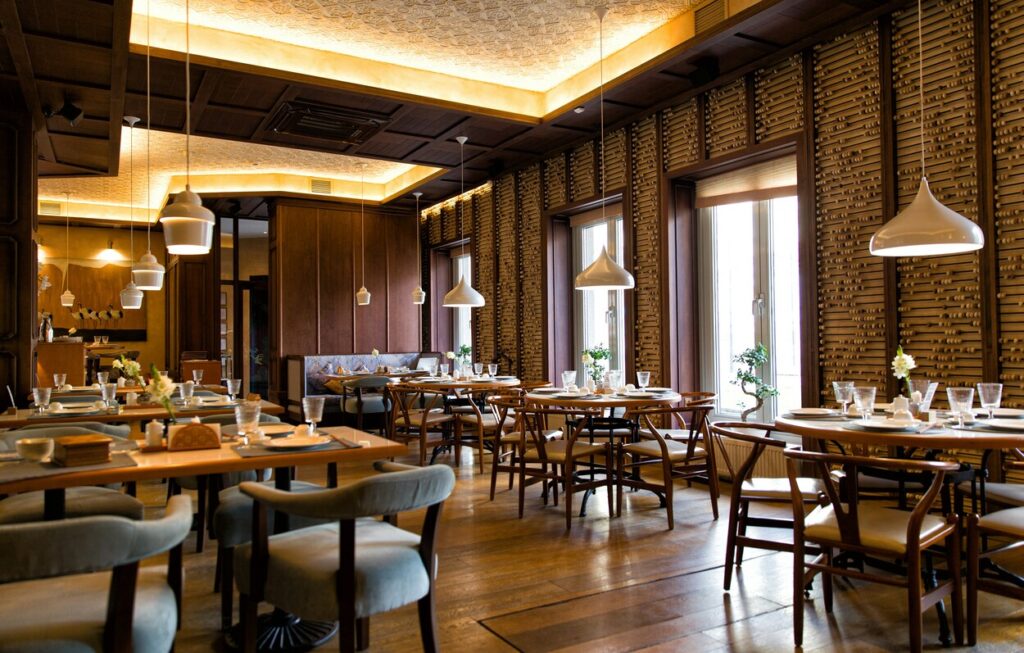
Mediterranean design draws its inspiration from the countries surrounding the Mediterranean Sea, creating spaces that feel both refined and effortlessly casual. Understanding these fundamental elements is crucial for successful implementation in restaurant interior design Singapore projects. Brainstorming and sharing ideas is essential for developing a Mediterranean-inspired concept that truly reflects the desired ambiance and character.
The foundation of Mediterranean style rests on natural authenticity. This approach emphasizes organic textures, handcrafted details, and materials that show honest wear and patina. Unlike minimalist trends that strip away ornamentation, Mediterranean design celebrates imperfection and the beauty of aging materials.
Key architectural elements include arched doorways and windows, exposed wooden beams, and stone or stucco walls. These features create visual interest and depth while maintaining the relaxed, lived-in feel characteristic of Mediterranean homes and tavernas. For modern restaurant interiors, these elements can be adapted through decorative arches, faux beam treatments, and textured wall finishes that capture the essence without requiring major structural changes. The layout of the restaurant is carefully planned to reinforce the Mediterranean atmosphere and optimize space for both functionality and aesthetic coherence.
Lighting plays a crucial role in achieving authentic Mediterranean ambiance. The style favors warm, golden light that mimics the soft glow of sunset over the Mediterranean. Wrought iron chandeliers, ceramic pendant lights, and strategically placed candles or lanterns create intimate pockets of illumination that encourage conversation and relaxation.
Furniture selection should emphasize comfort and durability. Heavy wooden tables, wrought iron chairs with cushions, and banquette seating with rich fabrics all contribute to the welcoming atmosphere. Different designs can be tailored to suit the unique character of each restaurant, ensuring the space feels both personal and authentic. The goal is to create spaces that feel like extensions of a Mediterranean home rather than formal dining rooms.
Adapting Mediterranean Style to Singapore’s Commercial Interior Design Landscape
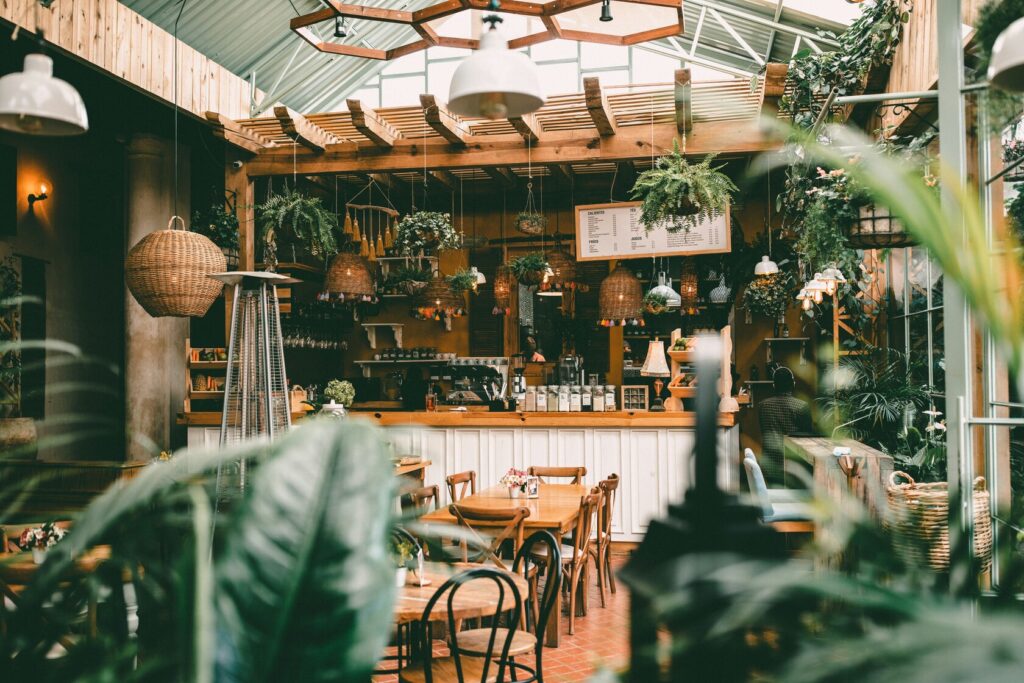
Restaurant Interior Design Singapore
Successfully implementing Mediterranean design in Singapore requires thoughtful adaptation to local conditions, regulations, and cultural preferences. This isn’t simply about copying European restaurants—it’s about creating an authentic experience that resonates with Singapore’s diverse dining culture.
Singapore’s commercial interior design landscape presents unique challenges and opportunities. The city-state’s multicultural population appreciates authentic cultural experiences, making well-executed Mediterranean design particularly appealing. However, space constraints, climate considerations, and local regulations require careful planning and professional expertise.
The Mediterranean Color Palette: Creating Ambiance in Singapore Restaurants
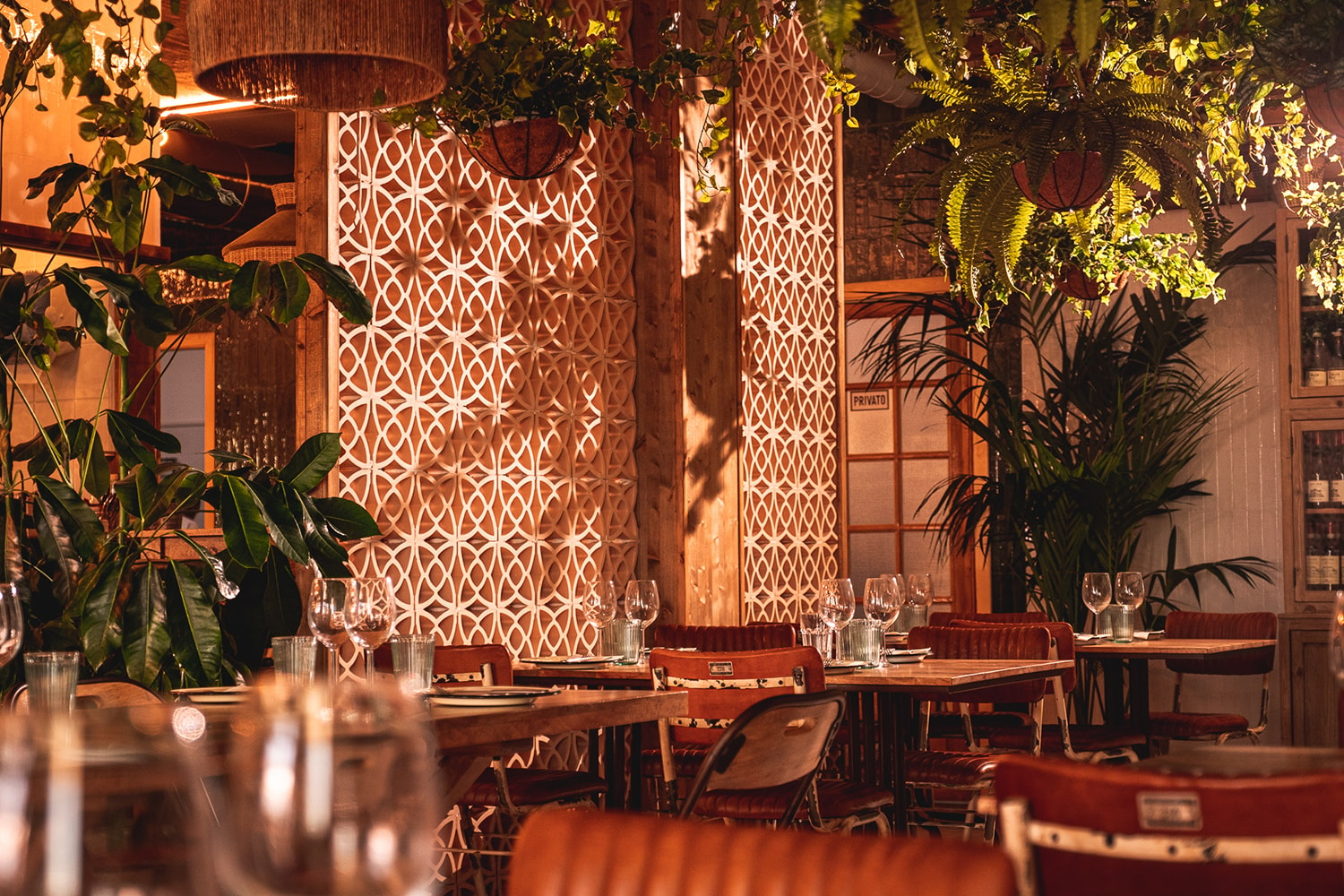
The Mediterranean color palette draws directly from the natural landscape—azure blues of the sea, warm terracotta of sun-baked earth, golden yellows of sunshine, and the sage greens of olive groves. These colors work exceptionally well in Singapore’s urban environment, providing a welcome contrast to the concrete and steel of the city. This palette creates a visually appealing environment that enhances the dining experience.
Brand identity – Innovative Design for Commercial Space
Blue serves as the anchor color, ranging from deep navy to soft azure. Use deeper blues for accent walls or upholstery, while lighter blues work well for decorative elements or painted furniture. Terracotta and warm ochre colors add earthiness and can be incorporated through ceramic tiles, planters, or accent walls. These color choices not only enhance the ambiance but also reinforce the restaurant’s brand’s identity by visually communicating its personality and values to guests.
White and cream serve as the foundation, creating brightness and openness essential in Singapore’s often compact restaurant spaces. These neutral tones also help reflect natural light, reducing the need for artificial lighting during daytime service.
For practical application, consider using these colors in washable finishes suitable for commercial kitchens. Glazed ceramic tiles in Mediterranean blues and earth tones provide both authenticity and easy maintenance—crucial for Singapore’s humid climate.
Natural Materials: The Foundation of Mediterranean Commercial Interiors
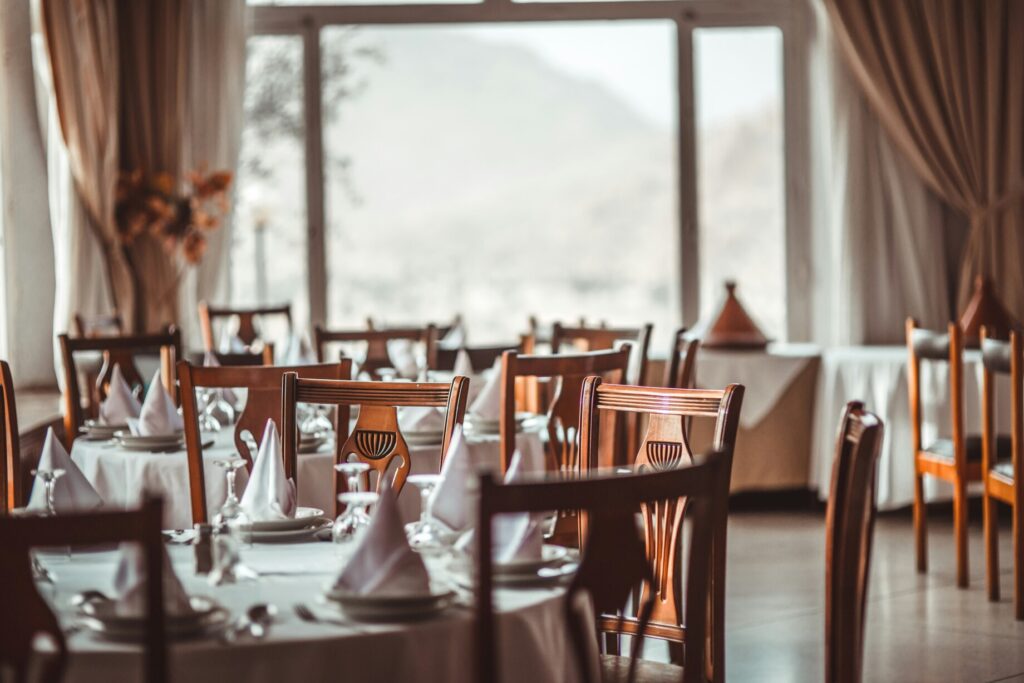
Natural materials are non-negotiable in authentic Mediterranean design. Stone, wood, ceramic, and metal each play specific roles in creating the desired atmosphere while meeting Singapore’s commercial requirements.
Stone elements might include travertine or limestone flooring, which provides durability and natural cooling properties beneficial in Singapore’s climate. For budget-conscious projects, high-quality porcelain tiles that mimic natural stone offer similar visual impact with lower maintenance requirements.
Wood selection requires careful consideration for Singapore’s humidity. Teak, a locally familiar material, works exceptionally well for furniture and decorative elements. Reclaimed or distressed wood treatments can add the authentic patina characteristic of Mediterranean design while ensuring durability in tropical conditions.
Ceramic and terracotta elements add texture and authenticity. Hand-painted tiles, ceramic planters, and decorative pottery create focal points while supporting the overall theme. Source these locally when possible to control costs and ensure faster delivery times. Careful planning during the construction phase ensures that these natural materials are properly integrated into the restaurant’s interior, maintaining both aesthetic appeal and functional performance. or regulatory issues.
Expert Tip: Request a preliminary project timeline as a measure of organization and experience.
Regional Variations: Greek, Italian, Spanish, and North African Influences
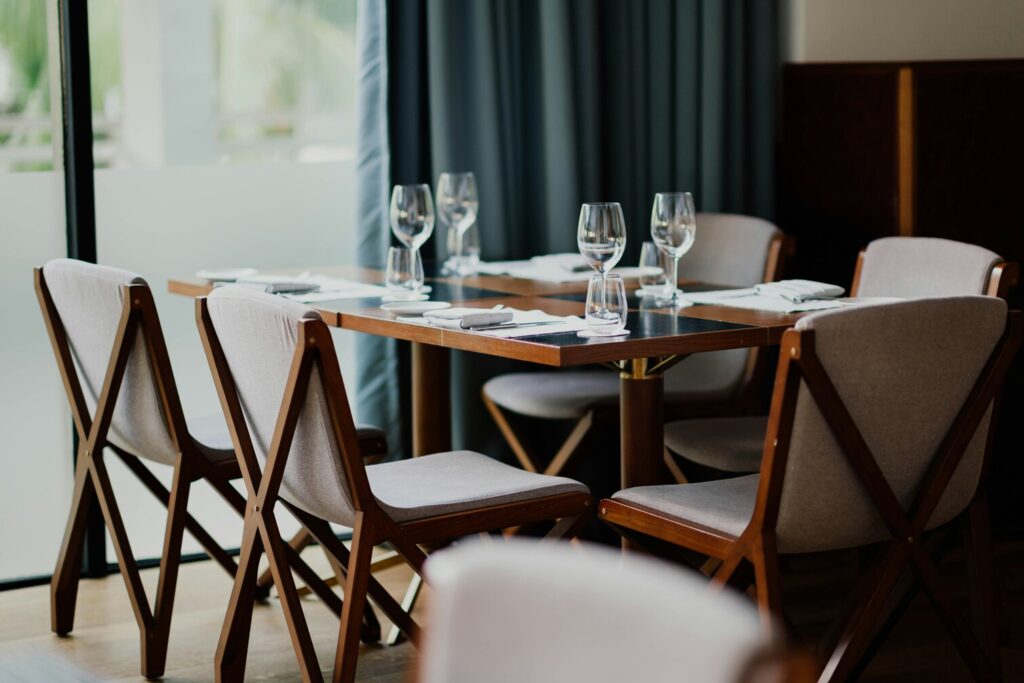
Mediterranean design encompasses diverse regional styles, each offering unique opportunities for restaurant differentiation. Understanding these variations allows for more targeted branding and marketing approaches.
Greek influence emphasizes white and blue color schemes, with simple, clean lines and nautical elements. This approach works particularly well for seafood restaurants or casual dining concepts. Incorporate elements like blue-painted shutters, white-washed furniture, and decorative anchors or maritime artifacts.
Italian inspiration leans toward warmer earth tones, rustic textures, and sophisticated craftsmanship. This style suits upscale dining concepts or family-style restaurants. Think rich wood furnishings, decorative ironwork, and warm amber lighting that creates an intimate, romantic atmosphere.
Spanish Mediterranean design incorporates Moorish influences with intricate tilework, wrought iron details, and bold geometric patterns. This dramatic approach works well for tapas bars or contemporary dining concepts seeking strong visual impact. Specialized bar areas can be designed to reflect the vibrant and social atmosphere typical of Mediterranean bars, with custom layouts and finishes that encourage interaction and capture the lively spirit of the region.
North African elements add exotic sophistication through rich jewel tones, intricate metalwork, and luxurious textiles. This influence can elevate Mediterranean design for fine dining establishments or create unique private dining spaces.
Expert Tip: Use digital tools to track supply chain and ensure deliveries line up with the construction schedule.
Practical Implementation Tips for Singapore’s Climate and Context
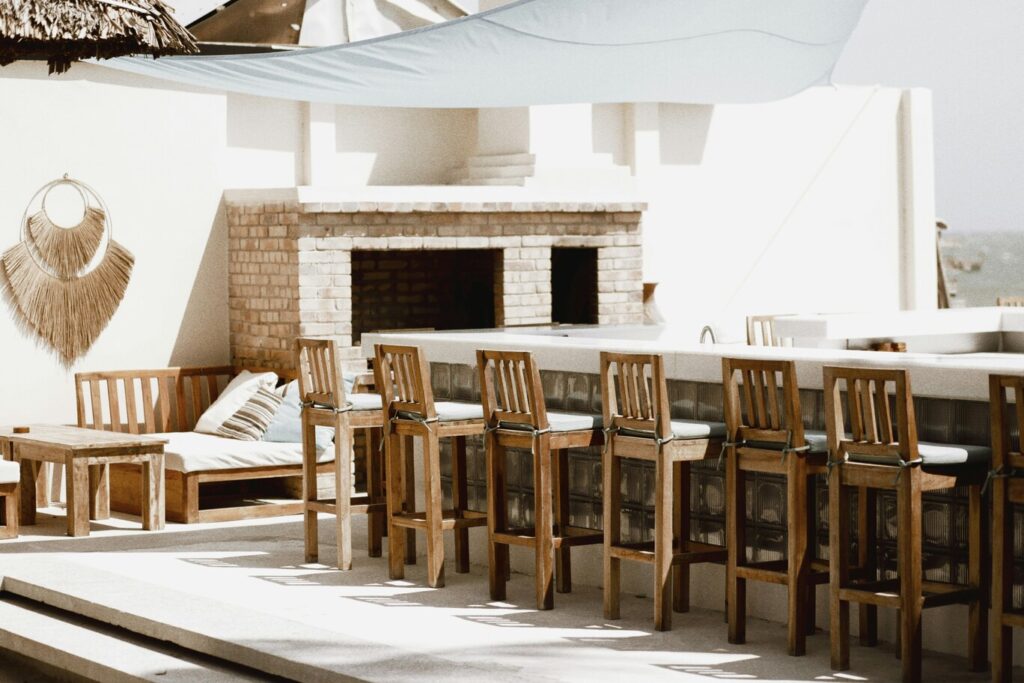
Singapore’s tropical climate presents both challenges and opportunities for Mediterranean design implementation. High humidity levels require careful material selection and ventilation planning, while abundant natural light can be leveraged to enhance the bright, airy feeling central to Mediterranean aesthetics. Incorporating ergonomic furniture and flexible layouts can further enhance employee comfort and productivity, ensuring that the workspace supports both well-being and efficient work habits.
A dedicated design team must work closely with clients to address their unique needs and ensure that every element is relevant to the restaurant’s concept and operational requirements. This collaborative approach is essential in both restaurant and office projects, where balancing aesthetics with functionality is critical.
Ventilation becomes critical when using natural materials like wood and fabric. Ensure adequate air circulation through HVAC planning and consider moisture-resistant treatments for wooden elements. Ceramic and stone materials naturally handle humidity well while contributing to cooling effects.
Take advantage of Singapore’s year-round warmth by creating seamless indoor-outdoor connections where possible. Retractable glass walls, covered terraces, or courtyard seating areas can extend the Mediterranean experience while accommodating Singapore’s occasional rainfall. Flexible design solutions also support efficient operations and adaptability to changing business needs, allowing spaces to evolve as requirements shift.
Consider local regulations regarding outdoor dining, fire safety requirements for decorative elements like candles, and accessibility standards that might affect traditional Mediterranean seating arrangements like floor-level cushions or raised platforms.
Budget considerations vary significantly based on concept and execution level. For casual dining concepts, focus investment on key visual elements like a statement tile backsplash, distinctive lighting fixtures, and authentic furniture pieces. Higher-end establishments can invest in custom millwork, imported materials, and architectural features like decorative arches or stone veneer walls.
Commercial Renovations for Mediterranean-inspired Restaurants in Singapore
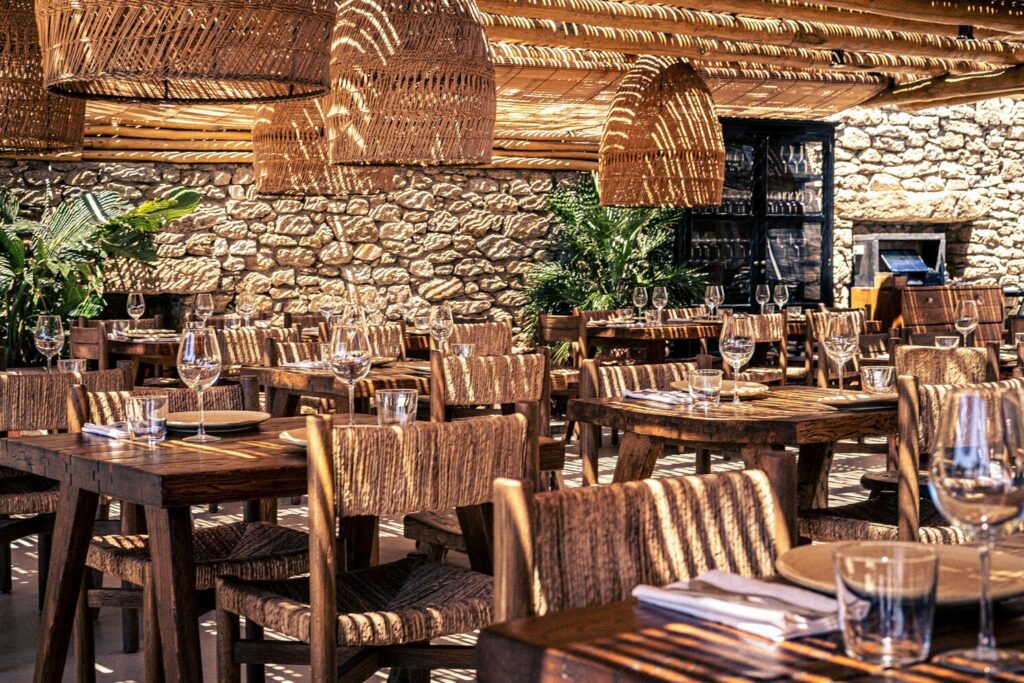
Several successful Mediterranean-inspired restaurants in Singapore demonstrate effective adaptation of this design style. Establishments like Prego at Westin Singapore and Basilico at Regent Singapore show how Mediterranean elements can be seamlessly integrated into Singapore’s hospitality landscape while maintaining operational efficiency and meeting local expectations.
Return on investment for Mediterranean design renovations typically shows positive results within 12-18 months for well-executed projects. The style’s timeless appeal and strong emotional connection with diners contribute to customer loyalty and positive word-of-mouth marketing. Additionally, the photogenic nature of Mediterranean interiors supports social media marketing efforts crucial for Singapore’s digitally-savvy dining culture.
For restaurant owners considering a Mediterranean-inspired renovation, it is vital to work closely with a professional team experienced in restaurant interior design Singapore. This team will collaborate with clients to fully understand their unique needs and deliver relevant solutions that align with both Mediterranean aesthetics and local commercial requirements. Prioritizing authentic experiences over superficial decoration and balancing functionality with beauty ensures long-term success in Singapore’s competitive dining market.
Mediterranean charm offers Singapore restaurateurs a proven path to creating memorable dining experiences that transport guests while remaining practical and profitable. With careful planning and professional execution, this timeless style can provide the differentiation needed to thrive in one of the world’s most competitive F&B markets.
